#Naito kurogane
Text
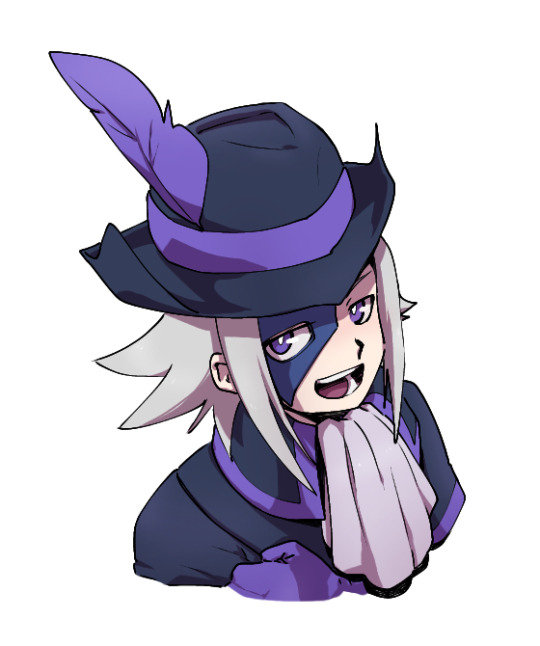
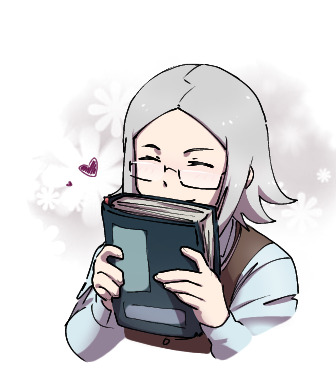
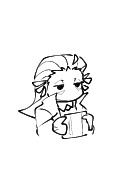
Same guy and he's very cool (not Evel I mean he's very cool too, he's just there cuz Tumblr's weird image formatting thingie)
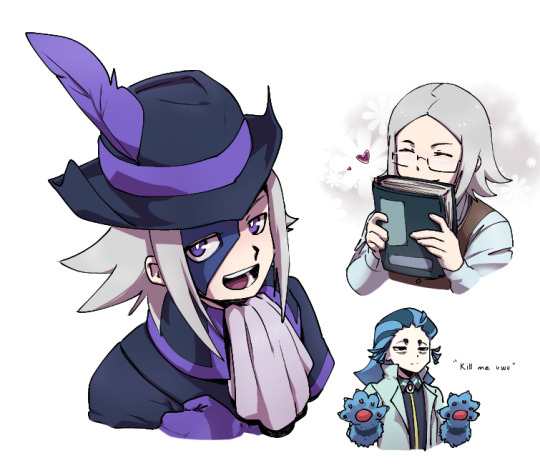
Again, it's a part of a huge canvas and there were doodles here and there. I've uploaded one of those before cuz it's the same canvas. I don't know if I can complete the big picture that's why I keep drawing doodles. They are fun but I hardly get time nowadays. Being a sophomore kinda suck.
#beyblade#beyblade fanart#count nightfell#naito kurogane#naito kaneguro#count night#beyburst#evel oxford#beyblade burst#beyblade burst turbo#beyblade burst chouzetsu#beyblade burst cho z#dead gran#dread tower#my art#ibispaintapp#digital sketch#drawing#fanart#art#artists on tumblr
31 notes
·
View notes
Text
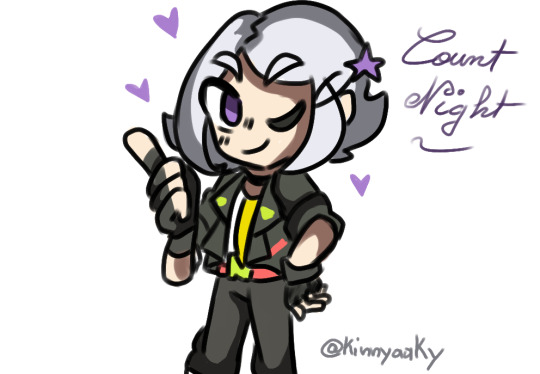

umm doodles i made Today :P not the best but i tried
@ova-kakyoin Look at the second drawing
#Beyburst#beyblade burst turbo#beyblade burst chouzetsu#beyblade burst dynamite battle#beyblade burst db#beyblade burst super z#count night#count nightfell#Bell daikokuten#bel daikokuten#bael daikokuten#bel daizora#bell daizora#Naito kurogane#my art
28 notes
·
View notes
Text
ACTIVITY CHECK!
Abaixo, segue a lista de personagens inativos na comunidade pelas ÚLTIMAS SEMANAS, que devem deixar de ser seguidos.
gyc-chieko : Igarashi Chieko (Mikako) › 96GYCK
gyc-azusa : Akiyama Azusa (Sana) › 96GYAA
gyc-shuya : Nakijin Shuya (Yamazaki Kento) › 94GYNS
gyc-nana : Watanabe Nana (Francis Lola) › 94GYWN
gyc-chai : Chaiyasan Somchai (Ten) › 98GYCH
gyc-daiki : Seto Daiki (Kentaro Sakaguchi) › 91GYSD
gyc-ryota : Minami Ryota (Kim Bobae) › 95GYRM
gyc-ayato : Misazaki Ayato (Nakagawa Taishi) › 93GYMA
Abaixo, segue a lista de personagens com pouca atividade na dash pelas ÚLTIMAS SEMANAS. Os players que quiserem manter seus chars devem entrar em contato no prazo máximo de 48 HORAS para justificar sua pouca atividade – personagens em hiatus e semi-hiatus não serão afetados assim como personagens aceitos a partir de 18/04.
gyc-seungho : Kim Seungho (Kim Junmyeon) › 91GYSH
gyc-tsu : Kurogane Tsukasa (Dan Gyokuei) › 00GYKT
gyc-yuu : Asahi Yuu (Bag Igeon) › 93GYAY
gyc-akio : Miyazaki Akio (Chae Hyungwon) › 96GYMA
gyc-shin : Kurogane Shin (Kim Dongkyu) › 96GYKS
gyc-chaewon : Kang Chaewon (Hyoseong) › 93GYKC
gyc-takuya : Fukuda Takuya (Jagang Ju) › 94GYFT
gyc-mugi : Tanaka Mugi (Shuichiro Naito) › 96GYTM
gyc-sayuri : Aoki Sayuri (Joo Minhee) › 97GYAS
gyc-kyoko : Hatake Kyoko (Lauren Tsai) › 98GYKH
gyc-hideki : Tsuyoi Hideki (Ahn Jihoo) › 94GYTH
gyc-yasuo : Ikeda Yasuo (Shon Minho) › 90GYYI
gyc-luka : Minami Luka (Hirai Momo) › 95GYML
gyc-haneul : Kim Haneul (MinYoung) › 92GYKH
gyc-natsu : Otori Natsu (Yong Jin) › 95GYON
gyc-peterj : Jung Peter (Dean) › 92GYPJ
gyc-mayumi : Noda Mayumi (Joheun) › 94GYMY
gyc-irish : Rachel A. Rodgers (Katie Macgrat) › 87GYRAR
gyc-minhyuk : Matsuo Minhyuk (Lee Minhyuk) › 90GYMH
2 notes
·
View notes
Text
@kurogane-no-shounen
Hijikata Toshizou
Hijikata Toshizo
Vice-commander of the Shinsengumi
Born - May 5, 1835 in Ishida, Tama, Musashi.
[May 31, 1835 in Ishida, Hino, Tokyo.]
Died - May 11, 1869 in Hakodate, Ezo at age 35.
[June 20, 1869 in Hakodate, Hokkaido at age 34.]
Names -
Imina - Yoshitoyo
Penname - Hogyoku
Alternate Name - Naito Hayato
Kaimyo - Saishin-inden-seizan-yoshitoyo-daikoji
Hijikata took the name “Naito Hayato” when he became a high-ranking retainer of the Tokugawa on March 1, 1868 [March 24, 1868]. The first name, Hayato, seems to have been chosen because it was part of his father’s name. However he reverted back to his original name after Kondo was captured and executed.
His “kaimyo” was chosen by Matsudaira Katamori of Aizu. It contains the elements “inden” and “daikoji” which were normally only used for daimyo and the like. As the son of a farmer, this was a huge honor that was granted toward him.
The fact that he could use his surname openly before the end of his life was another oddity. At the beginning of the Edo period, the shogunate had abolished the right of anyone below the social rank of samurai to have a surname. For many this was not a problem since they did not have a family name anyway. However leading families such as Hijikata’s did have one and were forced to make them into “secret names” known only to themselves and to very close friends in much the same manner as their “imina” or “hidden personal names”. It was not until he went to Kyoto that Hijikata was able to use his surname openly.
Physical Description -
Hijikata was considered to have “looked like an actor” and to have been handsome almost to the point of being beyond belief. He turned the heads of women wherever he went and many fell in love with him on sight. His complexion was pale and his hair was so black that it was almost blue. In height he was around 165cm - 167cm tall (about 5'5" - 5'6"), which was tall compared to most men of his era when the average height was between 154cm - 158cm (5'0" - 5'1"). The 165cm is probably closer to his real height since Okita was said to have been taller than he was. He also had a slight “stoop” to his shoulders.
In his dress he appears to have been very tasteful. One person who saw him while he was in Kyoto claimed that he looked like a daimyo. On that occasion he had been wearing a black crested kimono and a hakama of sendaihara silk.
Personality Quirks and Traits -
Hijikata is known for his hobby of writing haiku under the name “Hogyoku”. Before leaving for Kyoto he compiled everything that he had written into a collection which he left with his family. Most who have read his work say that it is not very good.
It is thought that he was fond of ume (variously translated as plum or apricot, but not really either) since many of his haiku had references to the flowers. There was also a blossom carved on the tsuba (handguard) of his sword and the saya (sheath) is also decorated with a few as well. His favorite color was said to be red and even the face mask he wore in training was tied with a red cord. One of Hijikata’s favorite foods was takuwan (pickled radish), especially the ones made by his Hashimoto relatives. Once while visiting with them he praised it so much that the master of the house told him he could take home as many as he thought he would need. This made Hijikata very happy and he took the whole bucket with him! (Note that takuwan is said to have a very strong smell and that the bucket was probably fairly big since the incident was remembered.)
Hijikata is often referred to as the “Onifukuchou” or “Demon Vice-commander” of the Shinsengumi because of his cruel nature. In reality this does not appear to have been the case. Rather the notion is mostly the creation of the novel “Moeyo Ken” by Shiba Ryotaro.
As for the real man, it is recorded that in character he was a plain, frank person who spoke little and rarely laughed or smiled. In Hakodate it was observed that he never behaved in any manner that was not completely befitting a samurai even in private. This natural reserve caused many to think of him as being stricter than he really was.
Hijikata is frequently described by those who met him as having been a kind and amiable man. One visitor to the Shinsengumi reported that even sitting face-to-face with the Vice-commander never seemed in any way unpleasant and that he was actually a “friendly-feeling person”. By the time that he went to Hakodate this trait had become even more noticeable and Shinsengumi member Nakajima Nobori wrote of how “gentle” he became in his later years in the inscription of his famous portrait of Hijikata.
This is not to say that he had a bland personality. As a leader he was charismatic, inspiring loyalty and trust in his followers. His troops in Hakodate adored him and one later recalled that upon hearing of his death they all “cried like babes who had lost their mother”.
Even during the years in Kyoto those under him do not appear to have found his methods to be overly drastic or forceful. Matsumoto Ryojun, a doctor for the Tokugawa government who sometimes tended to the Shinsengumi, was of the opinion that the group would have fell apart much sooner if not for Hijikata. His presence was generally enough to keep Kondo from making serious mistakes that would have made it impossible for the Commander to have good relations with the rest of the group. And when the petition was filed against Kondo by Nagakura and others, not one word was said against Hijikata.
Although many sources report that as a child he was a “spoiled brat” and a “bully” to strangers, but so far there is not a ready explanation of where the idea came from. Those who knew him seem to have regarded him as a good boy actually and when tales about the amount of bloodletting he was responsible for in Kyoto reached Tama they were not believed. And an often repeated comment about him in Hakodate is that he “returned to his original nature” there, implying that he was considered to have been a gentle person before leaving for Kyoto. Possibly his refusal to remain at the shop in Edo is the basis of this claim that he was a “brat”.
A little more on the negative side, Hijikata’s infamy apparently amused him to some degree. He also seems to have had a bit of a dark and quirky sense of humor at times. On a visit home he shocked people by claiming that one of his swords had been ruined by all the blood from his many fights. On another occasion he sent a package to the students training at the Shieikan with a note saying, “I send you something precious.” When they opened it, they discovered that it contained a bundle of love letters that women in Kyoto had written to the Vice-commander. The youths found this very funny and declared that, “Toshi-san gains another point!”
Though for the most part Hijikata was very calm and never acted rashly in the face of danger. It was very rare for him to lose his temper over anything and he was considered to be a tolerant person. However a shogunate scholar of western studies named Kato Hiroyuki commented that once Hijikata did become angry about something, he was even stormier than Kondo. Of the two, the shogunate found the Vice-commander much more difficult to control.
There are many testaments left about his courage on the battlefield and he was said to have been the bravest man in Ezo during the fighting there. He was even better known for his skills as a strategist and his efficiency in getting tasks done. A relative named Hashimoto Masano recalled that Hijikata had read many books, but that his knowledge of warfare seemed to have been an inborn thing with him. Another to be impressed with his martial skills was Frenchman Jules Brunet. He referred to Hijikata as “a true warrior” and speculated that had he been in a European army, he would have been made a general.
Another trait worth mentioning was his practicality. He easily adopted new ideas if their worth could be proven to him. During the time the Shinsengumi was active in Kyoto, eating meat was not a common practice. But when Matsumoto told Hijikata of the nutritional value of adding pork and chicken to their diet, the Vice-commander ordered his men to begin raising the animals for food.
Katsu Kaishu perhaps summed up this remarkable individual best when he called Hijikata “one man of great caliber.”
Family History -
Father - Yoshiatsu (Hayato) - 1792-1835, age 44 [43].
Mother - Etsu - 1792-1840, age 49 [48].
First Son - Tamejiro - 1812-1883, age 72 [71].
Second Son - no name - October 11, 1813 (premature death).
Third Son - no name - June 12, 1815 (premature death).
Fourth Son - Kiroku - 1819-1860, age 42 [41].
First Daughter - no name - August 4, 1821 (premature death).
Second Daughter - no name - May 5, 1822 (premature death).
Third Daughter - Shuu - 1823-1838, age 16 [15].
Fifth Son - Daisaku - 1828-1877, age 50 [49].
Fourth Daughter - Nobu - 1831-1877, age 47 [46].
Sixth Son - Toshizo - 1835-1869, age 35 [34].
Hijikata’s father died several months before he was born. It appears that the cause of his death may have been tuberculosis. His sister Shuu is also rumored to have been isolated for the disease before she passed away in 1838, when Hijikata was 4 [3]. Two years later his mother passed away and TB is again speculated to have been the cause of her death. Hijikata was only 6 [5] at the time.
Tamejiro, the eldest son, was blind and unable to inherit the family property. He was a refined person who enjoyed joruri and tanaka and was probably the inspiration for Hijikata’s own attempts at haiku. He also never let his handicap get in his way. On one occasion when he was returning home from a brothel he found that the Tamagawa (Tama river) had flooded. Instead of stopping he merely wound his clothes on top of his head and waded across.
Kiroku inherited his father’s estate as the next oldest son. It was he and his wife who raised Hijikata after the death of their mother. (He lived with Kiroku up until about the age of 11.) Kiroku’s attempt to set his little brother up in a career with a major store in Edo unfortunately failed because Hijikata would not co-operate and this perhaps strained their relationship a bit. He did not live to see Hijikata become a success in the Shinsengumi, passing away in 1860 - three years before the group was to form.
Daisaku was adopted by another family which practiced medicine. He changed his name to Kasuya Ryojun and became a doctor. He apparently had excellent calligraphy skills and is thought to have written the sign outside of the Shinsengumi’s headquarters in Mibu.
Nobu married a cousin named Sato Hikogoro. Sato’s mother, Masa, was their father’s sister and it was her wish that Nobu and Hikogoro marry. After losing the job Kiroku had gotten for him, Hijikata lived more often at the Sato house. Hikogoro was described as a “stout-hearted” person and the two of them got along very well. Sato also had a dojo built in his home to study Tennen Rishin Ryu because he was concerned about bandits and thieves. It was Kondo Isami who would come to teach these classes, which is how Hijikata first got to know him.
Though the Hijikata family were wealthy farmers of the Tama region. They lived in the Ishida village in Tama, Musashi province. Originally they had lived north of Ishida temple, but were later forced to move to another house near Mangan-ji Temple. The reason was the massive flooding of the Tamagawa in the June of 1846. Part of their property was severely damaged. Hijikata was 12 [11] at the time. In 1989 it was deemed impossible to save this second family home any longer and the place was torn down, though the Hijikata family still owns the property and rebuilt there.
Takahatasan Kongo-ji Temple (Takahata Fudoson) was their family temple. It is of the Shingon Sect and one of the three great Fudo temples in the Kanto region. A statue of Hijikata in his Shinsengumi uniform now stands on the grounds next to the Benten pond.
Hijikata’s family also had relatives in the village of Onoji who were named Hashimoto. When he went to the village to teach later on, he would often stay with a Hashimoto Michisuke. This may have been the person who gave him the takuwan. There was also a Hashimoto Masanao. The family was indirectly related to Kojima Shikanosuke through a grandmother in the Hashimoto family.
(Ages of the Hijikata family in 1835.)
Father - deceased
Mother - 44 [43]
Tamejiro - 24 [23]
Kiroku - 17 [16]
Shuu - 13 [12]
Daisaku - 8 [7]
Nobu - 5 [4]
Before the Shinsengumi -
When he was around 11 years old, Hijikata planted an arrow bamboo plant on the family property with the wish that he could become a samurai and win a reputation. The arrow bamboo is still growing today and stands proudly near the entrance of a datahall attached to the family home where many important Shinsengumi mementos are kept. Also at the datahall is a pillar that was rescued from the old house. Hijikata would use it to practice the “harite” or “slapping” of sumo wrestling.
Around 1845, when Hijikata was 11 [10], Kiroku got him a job at a shop in Ueno, Edo called the Ito-Gofukuten. (This store is now called Matsuzakaya and is a very high-class place.) It sold kimono fabric and had a “men only” household. As a younger brother, Hijikata himself could inherit nothing and so was very poor himself. Kiroku obviously wanted to ensure that he could someday be independent and most likely went through a lot of trouble to make this arrangement for him. Unfortunately these plans had been made without reckoning with Hijikata himself.
Soon after being brought to the shop he quarreled with one of the clerks (some stories say it was actually the owner) and ran away. He returned to Tama along the Kousiyuu Highway, which was a distance of 36km (a bit over 22 miles) from his home. The walk took him about 10 hours and he had to make it at night. He never returned to the store. Needless to say, this sort of betrayed his older brother’s expectations of him and it may have been difficult for him to return to the Hijikata house. It was at this point that he began to live most often at the Sato house.
In 1851, at age 17 [16], he got another job at a shop that was a branch of the other Matsuzakaya. Because of his good looks, they made him sit near the storefront to attract customers into the shop. He was noted to have been very good with scissors. However this job did not last long either because he was caught messing around with a female co-worker and fired. He would later observe that he simply did not have the temperament to be a merchant.
Sato scolded him over losing yet another job, but Hijikata quickly came up with a solution himself. He began to peddle the medicines made by the Hijikata and Sato families. On these trips he would carry his fencing equipment so that he could take lessons at the various dojo he stopped at while plying his trade. In this was he could earn money and still pursue his true interest and this time he was successful. He continued to do this until formally enrolling in the Shieikan in 1859.
On November 6, 1861, Hijikata was at the Sato house when he became seriously ill. His brother Kasuya Ryojun (Daisaku) was called to attend to him and three days later the doctor son of another family acquaintance was brought in to check on him. Although it is unknown exactly what was wrong with him, he was dangerously sick and almost died.
Martial Skills -
Ryu - Tennen Rishin Ryu
Rank - Mokuroku
Teacher - Kondo Shusuke, Shieikan dojo
It is not certain exactly when Hijikata joined the Shieikan. Kojima Shikanosuke recorded that he entered the dojo at about age 17, but the school’s records do not mention him. They do show that he was formally enrolled in 1859, at age 25 [24]. It may be that he was informally associated with the dojo before that time.
Also, Hijikata does not appear to have ever earned a Menkyo (license) in Tennen Rishin Ryu. He is recorded as only have received a Mokuroku, the next to the lowest level. Despite his skill with a sword, all of the lessons he took at the dojo he visited while peddling medicine caused him to have the form of various sword styles mixed into his swordsmanship. It was said that Kondo Shusuke did not regard this mixed sword style as good and undoubtedly he would have been made to start all over again. Still, he was considered to be a formidable opponent and his enemies did not take him lightly.
His Sword(s) -
Long Sword - Izumi no Kami Fujiwara Kanesada - 2'8"
Short Sword - Kunihiro Horikawa - 1'11"5
Toshizo’s favorite blade was made by a swordsmith from Aizu. It is now on display in his family home in Ishida, where he is believed to have left it on his way to Kofu castle. His supposed short sword, the Kunihiro Horikawa, was a blade that was generally something only a daimyo or the like could afford. For this reason it is speculated that Hijikata’s may have been a forgery.
When they set out for Kyoto, Hijikata did not have a sword and had to borrow one. However it is recorded that by October of 1863 he was supposed to have already possessed both the Kanesada and Kunihiro Horikawa. Considering that the Kanesada was made by a swordsmith living in Aizu at that time, it is likely that the domain provided him with this blade.
Shinsengumi Years -
Started out in the Mibu Roshi as a Vice-commander along with Yamanami Keisuke. After Yamanami’s death he continued to fill this role alone. On March 1, 1868 [March 24, 1868] he became a high-ranking retainer of the Tokugawa. Later on he served as the Vice-commander of the army in the Republic of Ezo.
Hijikata helped to form the Shinsengumi at age 29 [28] and is commonly thought to have been the soul of the group. But despite all of his contributions to their success, he never sought replace Kondo as the leader. Instead he tended to treat the Commander in the manner he would have an older brother.
One of the items on display at the datahall in Ishida is a metal forehead protector that he wore during the political change on August 18, 1863 [September 30, 1863]. At this time the group became the Shinsengumi and began to gain some measure of respectability. Hijikata was of course delighted with the turnabout in their fortunes. When an old friend, Tomizawa Mashiro, visited the group in Kyoto, the Vice-commander entrusted this item to him and requested that he take it back to his family in Tama as a memento, along with a letter that he wrote them. Looking at it closely, one can see a small sword scar on the front of it, proving that this piece of equipment did its job on at least one occasion. Considering that the Shinsengumi did not actually fight on that day, the mark was either put there during another scuffle or it may have been a used piece of equipment and so was already scratched when it came to him.
In his free time, Hijikata seems to have liked to play shogi (or go according to some) with Okita. It is remarked that all the other members would gather around to watch the game and that everyone seems to have enjoyed these matches very much.
The battle of Toba-Fushimi would have a profound effect on Hijikata. Immediately after being defeated by western weapons, he decided to take the best of both the modern and the samurai world. He cut his long hair and began to dress in french clothing. He also began to carry a revolver as well as his sword. In this he serves as an example of what samurai may have become had the Meiji government not put an end to the warrior class.
Not long after the defeat at Kofu, Kondo was captured and executed as a common criminal by the imperial army. This event left Hijikata consumed with guilt over his failure to save his friend and only strengthened his own resolve to fight to the death. He told others that he would be too embarrassed to face Kondo in the next life if he were to make peace with his enemies.
It was at some point during this time period that the two pictures of him were likely taken. No one knows exactly when or where this occurred. Sendai is one possibility. Another is that at least one of the pictures was taken in a studio in Hakodate where many of the other members of the Republic of Ezo had their portraits taken. At least one of these pictures was sent by him to the Sato family through his page, Ichimura Tetsunosuke.
On May 11, 1869 [June 20, 1869], the Meiji army began its invasion of Hakodate. Hijikata was unwilling to abandon members of the Shinsengumi who were guarding a fort called Benten Daiba. Instead of remaining at Goryokaku, he made a desperate attempt to get to the other fort and encountered enemy troops. He was killed on horseback by a bullet which struck him in the abdomen and shattered his lower back. He seems to have been dead before any of his men could arrive at his side. It is unknown where Hijikata was buried.
Love Life -
Women were naturally drawn to the exceptionally handsome Hijikata and there is little doubt that he was well aware of this and took full advantage of his looks. Kondo once wrote in a letter that the Vice-commander was bragging about his numerous women. In addition, many of the higher ranking members had more than one home in Kyoto where they kept their lovers. Hijikata was said to have been the worst offender in this regard.
As mentioned before, he received many love letters from women in Kyoto. Another incident which shows the sort of reaction he commonly caused is told of the time the Shinsengumi spent in Goheishinden (now Adachi Ward, Tokyo) just after Kofu. Hijikata spent some of his time fishing in the river there, while still using the name “Naito Hayato”. No one in the area knew that he was actually Hijikata Toshizo of the Shinsengumi, so his reputation was not an influence on what happened next. Before long every girl in the village had gathered on the riverbank to watch the “handsome samurai”. It was agreed by all of them that he was “a nice man”.
So just how bad was he when it came to the ladies? Even during the time he was at the Shieikan he was a regular visitor to Yoshiwara and had a woman there. In Kyoto there was a woman he would go to see in Shimabara, about three geisha in Gion, plus two or three more he would visit in Shimmachi pleasure quarters of Osaka. Also there was another woman who may have been named something like “Kotsuru” or something to this effect. (The translator was not very clear on these names.)
Yet another lover was a woman who may have been called something along the lines of “Okiku”. According to rumor she actually had a daughter by Hijikata, but the baby died soon after it was born. After this the woman said goodbye to him and married another man. It is said that she died very young.
At first glance it is easy to get the impression that Hijikata was merely shallow when it came to women. However there was one relationship that he had before leaving Edo that proves otherwise. Before leaving for Kyoto, he was engaged to be married to a woman named Okoto. The arrangement had been made by his oldest brother, Tamejiro, who played the shamisen. Okoto’s parents owned the shamisen shop that he often visited. Tamejiro introduced his brother to Okoto and their families urged them to marry at once.
For his part, Hijikata seems to have been agreeable to the marriage. However he was already planning to join the Roshitai with Kondo and the others at that point and was reluctant to give up his dream now that he was so close. So he said to them, “After winning a promotion, I want to carry out my marriage.”
Once in Kyoto, he continued to appear to be sincere in his intentions to marry Okoto. He sent her a present and later visited her when he returned to Edo for a brief visit. But the social situation in Kyoto proved to be far more unstable than they had anticipated and when he finally did receive the “promotion” that he sought, he found that the Shinsengumi had put him in a position that would be dangerous for anyone involved with him. Hijikata felt that he had no choice but to cancel the engagement.
Although he had many lovers afterwards, he never again came close to making a commitment to any of them. This would actually become the general policy of the Shinsengumi. Though there were exceptions to the rule, for the most part married men and family heirs would be discouraged from joining the group. The risks were simply too great.
By the time Hijikata went to Ezo, he was avoiding women altogether. As far as anyone knows, he had no children.
Translation of the Inscription on the Portrait by Nakajima Nobori-
“Hijikata was a man of great talent and integrity. In his later years, he became so gentle that people sought him in the way a baby seeks his mother. On the eleventh day of the fifth month of Meiji 2 (1869), during the Hakodate Battle, he fought like a fierce tiger chasing after a helpless flock of fleeing lambs. Taking several of his men, he forcefully headed into battle and was killed on his horse by a sniper. He was a great and noble man of his time.”
0 notes
Text
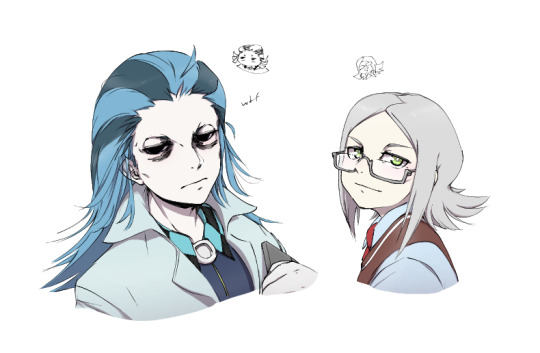
Dr. Evel Oxford and maybe idk, his assistant, Naito Kurogane.
So I found this cool brush and this is what I've been drawing since yesterday. Evel may have gone into the uncanny valley I can't tell lmao; there isn't enough change in Naito tho. Evel looks barely alive, which is prolly me going in the right direction lol. He hasn't seen sun in years.
#beyblade#beyblade fanart#evel oxford#naito kurogane#count nightfell#count night#beyburst#beyblade burst#beyblade burst turbo#beyblade burst chouzetsu#beyblade burst cho z#naito kaneguro#dead gran#dread tower#dr evel#my art#ibispaintapp#digital sketch#art#drawing#fanart#artists on tumblr#semi realism#you can tell Im obsessed w this ship
32 notes
·
View notes
Text

Valentine's except I'm always late
So, Naito Kaneguro, Kurogane, earl- Count Nightfell but a normal type. Kinda salty- no. Really salty about how underused Count night is and that we didn't get to see him have a second life and be Zac's brother >: it's insane


His valentine. Gud Cambridge. I have a story kinda thing in my mind, an experimental first page of which is done. Which is prolly what I had in mind while drawing this. Other than that I just like this ship, will elaborate later ig. I actually made a wholeass daily challenge for myself for yk, the valentine week. They're gonna take time lmao.
bruh they really exchanged the ane and uro in Kaneguro for the brothers' english name, Kurogane. What exactly is achieved.
#beyblade#beyblade fanart#count night#count nightfell#evel oxford#naito kaneguro#naito kurogane#dr evel#beyburst#beyblade burst#beyblade burst turbo#beyblade burst chouzetsu#beyblade burst cho z#valentine's art#dead gran#dread tower#my art#ibispaintapp#digital sketch#fanart#art#drawing#artists on tumblr#i usually call this ship evening or evenight#again will elaborate later cuz i spent a considerable amount of my brain cells coming up with that name#I found a new brush and I can't stop drawing wtfff#i mean im not even completing the previous yet starting another already#reason why i can't complete art
20 notes
·
View notes
Text

Random evil stuff I wanted to post
Ik mayblade is still happening, I'm trying n stuff but amidst that, you know what. Fluffy thief of course, who could've not seen that coming.

lil smoochie

The context goes like, uh, a reddit post, ffs. Basically beyburst characters rated on a scale of furry. He's not literally rated "the furry" but the thought that somebody can watch the show, look at Evel and think "yea, probably a furry." It's just funny asf.
#beyblade#beyblade fanart#evel oxford#count nightfell#count night#beyburst#beyblade burst#beyblade burst turbo#beyblade burst chouzetsu#beyblade burst cho z#dead gran#my art#ibispaintapp#digital sketch#drawing#fanart#art#artists on tumblr#i don't tag Naito Kurogane unless it's his alter ego#they look good together me thinks#you have no idea for how long I've held onto this rarepair it's crazy#the amount of fanart of them I've uploaded vs what I've made still offline is not even comparable to the tip of an iceberg#those offline drawings are just incomplete lawl#i do not upload incomplete
25 notes
·
View notes
Text
Roguefort cookie and count night should be friends
Zac and parfait cookie too
that's all, have a good day
#literally posting this just before going to bed lmfao#Good night folks#me is gonna sleep#anyways fancy mfs#beyburst#beyblade burst#beyblade burst chouzetsu#beyblade burst turbo#cookie run kingdom#cookie run#cookie run ovenbreak#roguefort cookie#parfait cookie#zac the suinshine#zenkuro kurogane#zachary kaneguro#count night#count nightfell#naito kurogane#naito kaneguro
14 notes
·
View notes
Note
Any hcs for Zac and/or Count Nightfell?
COUNT NIGHT / NAITO KUROGANE
1: sexuality headcanon : Asexual
2: otp : don't ship him with anyone for now
3: brotp : oh Orochi ! i just think these two would get along very quickly !
4: notp : i will never get the image of that one fanart of him and aiger that traumatized me. NEVER
5: first headcanon that pops into my head : he usually helps Zac with when he has performances, clips ans stuff like this with his costumes and accessories etc
6: one way in which I relate to this character : i can't find one rn
7: thing that gives me second hand embarrassment about this character: when he disguised as ranjiro and when he was asked what his fovourite food was he answered with sofisticated food while ranjiro just said : wtf no my jam is hamburgers. i can't get enough of this scene
8: cinnamon roll or problematic fave? : uhhhhhh idk ????
ZAC THE SUNSHINE / ZENKURO KUROGANE
1: sexuality headcanon : Pangender
2: otp : Zacander and Orozac, i love them both equally
3: brotp : Blidnt ! i really want these two to meet !
4: notp : idk ?
5: first headcanon that pops into my head : Zac's parents were actually first against the idea of him becoming a popstar, but thanks to the help of Naito ( who was actually very supportive towards Zac's wish ) he managed to convince them to let him achieve his dreams
6: one way in which I relate to this character : I'm a drama queen too sometimes lol
7: thing that gives me second hand embarrassment about this character : the fact that he basically insulted his public in front of their face and that they didn't noticed hvjjtyyv such a passive agressive king i love him
8: cinnamon roll or problematic fave? : ehh don't know tbh
5 notes
·
View notes